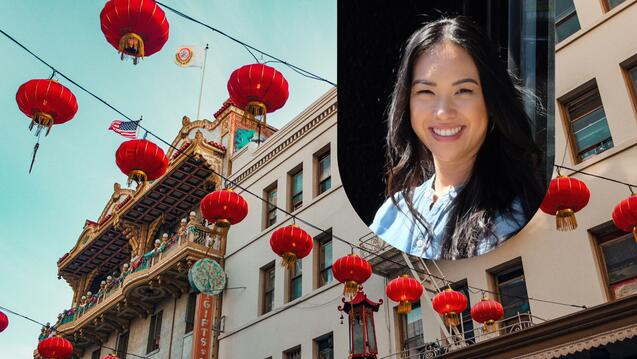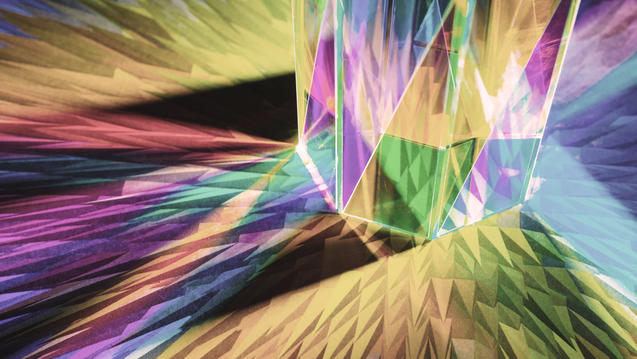Dr. Karim Dajani, M.A. '95, Integral Counseling Psychology, joined Clinical Psychology’s annual spring conference to explore the social unconscious in the work of Wilfred Bion.

Indigenous Rituals As Tools for Healing and Discovery
A graduate’s journey integrating Eastern contemplative wisdom with Western depth psychological frameworks.
Dr. Hemalatha Swaminathan is a practicing psychologist based in Chennai, South India, where she has maintained a therapeutic and training practice for over 20 years. A 2024 graduate of the East-West Psychology Ph.D. program at CIIS, her work bridges Eastern contemplative traditions and Western depth psychological frameworks through embodied, art-based, and ritual-informed approaches. In the reflection below, she shares how CIIS helped her deepen her research, reclaim ritual as a healing practice, and create ARANGAM, a culturally-rooted therapeutic ritual inspired by Indian performance traditions.
"The privilege of a lifetime is to become who you truly are." – Carl Jung
This quote has stayed with me for years, quietly shaping the direction of my personal and professional journey. It echoed most powerfully during a chance workshop with Dr. Kate Donohue, whose work in expressive arts therapy stirred something deeply resonant in me. That moment of alignment wasn’t just inspiration—it was a calling. It eventually led me to California Institute of Integral Studies (CIIS), where I pursued a Ph.D. in Psychology. CIIS gave me the language, structure, and soulful rigor to explore the psyche in ways that honored both science and spirit.
Research Focus
My research examines how indigenous rituals and embodied practices can serve as culturally meaningful tools for psychological healing and self-discovery. I remain endlessly fascinated by how movement, art, and symbol can express what words often cannot.
My research specifically centers around ARANGAM, a three-step embodied ritual drawn from indigenous Indian performance traditions—particularly temple rituals and classical art forms—which I reinterpret as a method for exploring the psyche. This ritual is designed not for performance but as a healing modality, allowing individuals to enter liminal space, encounter their inner archetypes, and embody transformation. The work draws from both Jungian frameworks and indigenous wisdom to create a method that is experiential, symbolic, and deeply rooted in the body.
The inspiration for ARANGAM is deeply personal. Having been trained in Bharatanatyam from a young age, I experienced firsthand the reverence with which space, body, and spirit are held in the tradition. The dance stage—or arangam—was not merely a performance space but a sacred threshold where the dancer becomes the deity, embodying stories, emotions, and archetypes with devotion. This early immersion taught me that the psyche too needs such sacred holding—a container where the body becomes the medium and the ritual the path.
It was through this lens that I began to understand the importance of sacred space in psychological healing. Just as Bharatanatyam demands embodied presence and surrender to something greater, ARANGAM invites the seeker to step into an intentional space, one that honors the unconscious and the symbolic. The gestures, stillness, and transitions in the ritual evoke not performance but inner movement—toward integration, toward the divine within.
This embodied engagement—rooted in my cultural lineage—became the seed for honoring the sacred in the therapeutic process. Rather than viewing healing solely through a cognitive or verbal framework, ARANGAM returns us to the wisdom of the body, to the sacredness of space, and to the possibility that transformation arises when psyche and soma meet in ritual.
On Learning at CIIS
CIIS has been more than just an academic institution; it has been a sanctuary for exploration, introspection, and deep learning. When I first walked through these doors, I carried not just books and notebooks but questions—questions about the mind, about healing, about the role of art and words in understanding the human psyche. What I found here was a space that not only welcomed my inquiries but celebrated them.
At CIIS, I learned that academia is not just about answering questions but about learning how to ask them. It is about the courage to challenge norms, to embrace ambiguity, and to sit with uncertainty. This institution has taught us all the power of self-inquiry, the necessity of compassion, and the importance of intellectual and emotional integrity. It has given us the courage to stand in our truth, to bring forth new perspectives, and to engage in conversations that have the power to heal and transform.
CIIS also offered me a unique intellectual and spiritual space to hold paradox, which is central to Jungian thought and also to indigenous worldviews. One profound insight was the understanding that the psyche is not separate from culture, landscape, or the body—it is embedded. Studying Organic Inquiry and Depth Transformative Practices at CIIS helped me move from "studying" rituals to being in ritual. It deepened my ability to listen—beyond language—and attune to the unconscious in more embodied ways.
Collective Dream-sharing
One of the most transformative moments happened during a class on Jungian dreams, where we viewed dreams not as problems to solve, but as sacred texts to explore. I still remember how a collective dream-sharing session in that course created space for my ARANGAM ritual to emerge. Another pivotal experience was engaging in embodied inquiry through movement in Professor Ishtar Kramer’s class, where I found permission to trust the body as a place of knowing. Other classes on Comparative Mysticism, Yoga Traditions, and Enchanted Imagination further enriched my exploration of the psyche.
Building a Sacred Community
Beyond the classroom, CIIS has given me a community—one that is rooted in empathy and mutual growth. The friendships I have formed here are not just connections; they are sacred bonds that will continue to inspire and support as I step into the world beyond these walls.
CIIS gave me the scaffolding and soulful community to believe in a vision that bridges indigenous knowing and academic rigor.
An Enriching Path Forward After Graduation
Going forward, I plan to offer workshops that integrate ARANGAM with expressive arts and Jungian dialogue. I also intend to co-create healing spaces with local artists and therapists, reclaiming ritual as a form of psychological resilience. I’m exploring collaborations with Jungian scholars and embodied practitioners to expand this work internationally—CIIS has helped me find both the language and the courage to do so.
My dissertation is available on ProQuest. I am working on a forthcoming Jungian conference on Forever Jung, where I will present a paper titled "A Three-Step Embodied Ritual Toward the Alchemy of the Psyche," drawn from my dissertation. I have begun facilitating a mini workshop called “5 Days: 5 Rituals,” which encourages participants to create personal rituals of self-care. Participants are then encouraged to reflect on how these personal rituals helped them connect to their psyche. Additionally, I am developing a reflective workbook for therapists and clients to help them integrate ritual and embodied inquiry in therapeutic spaces.

East-West Psychology
Exploring the convergence of Eastern, Western, and Indigenous psychologies and spiritualities
Related News
Transformative Leadership alum Cynthia Huie, M.A. '24, brings creativity and connection to the San Francisco small-business community.
A panel hosted by the Department of Human Sexuality gathered notable alumni from the Ph.D. program to discuss their change-making work and research.



